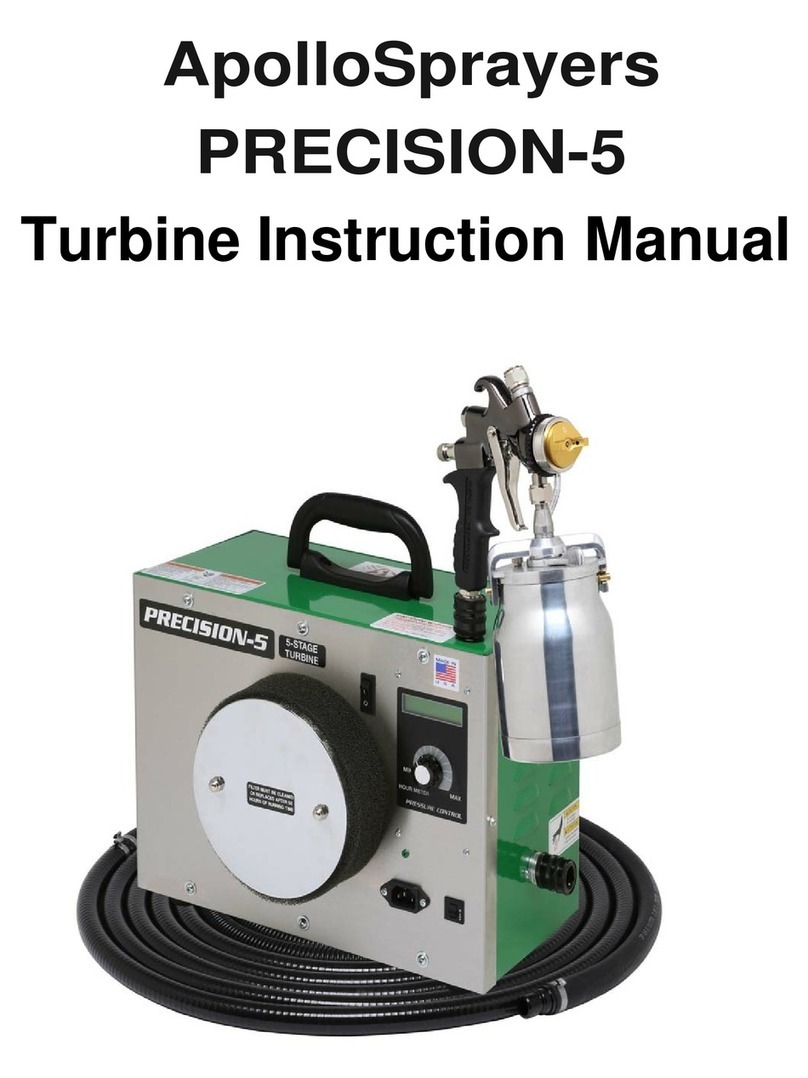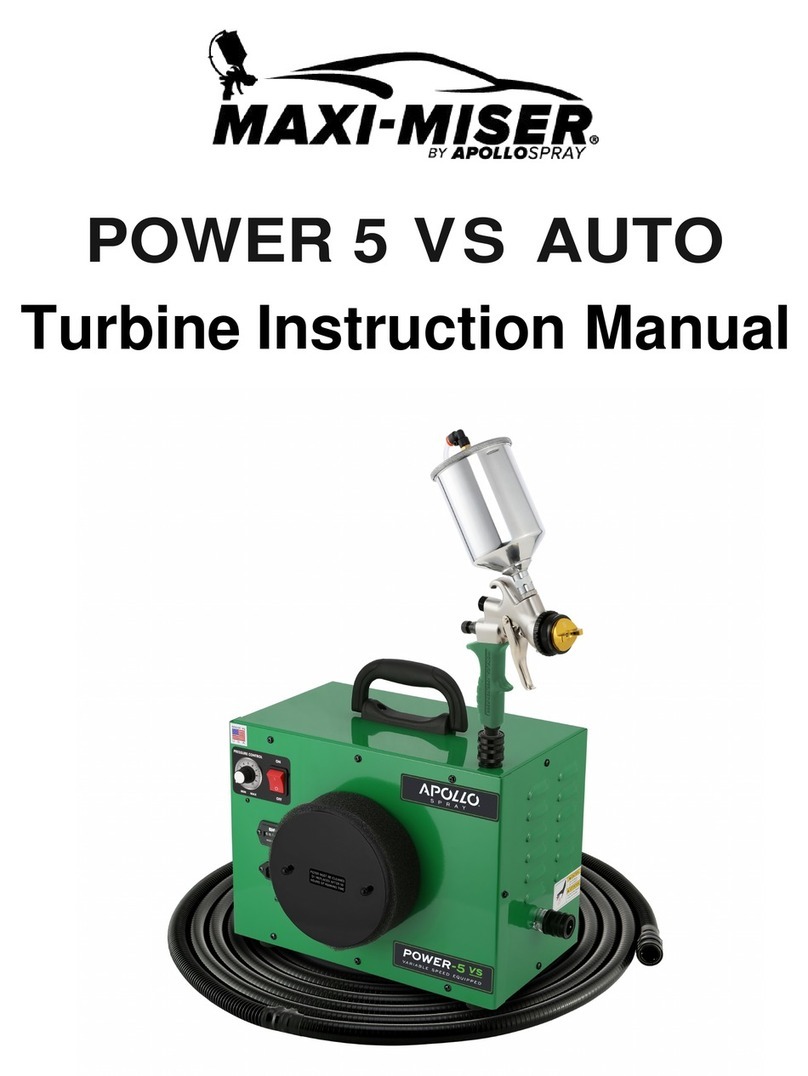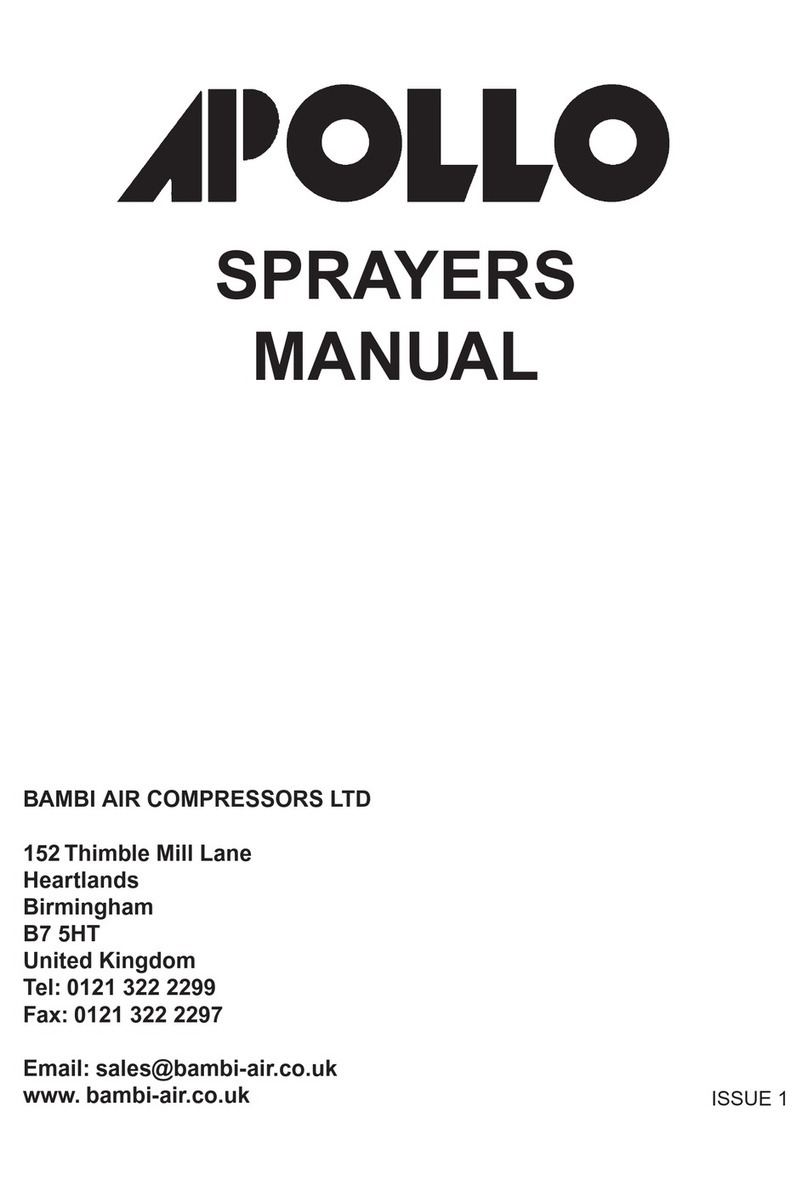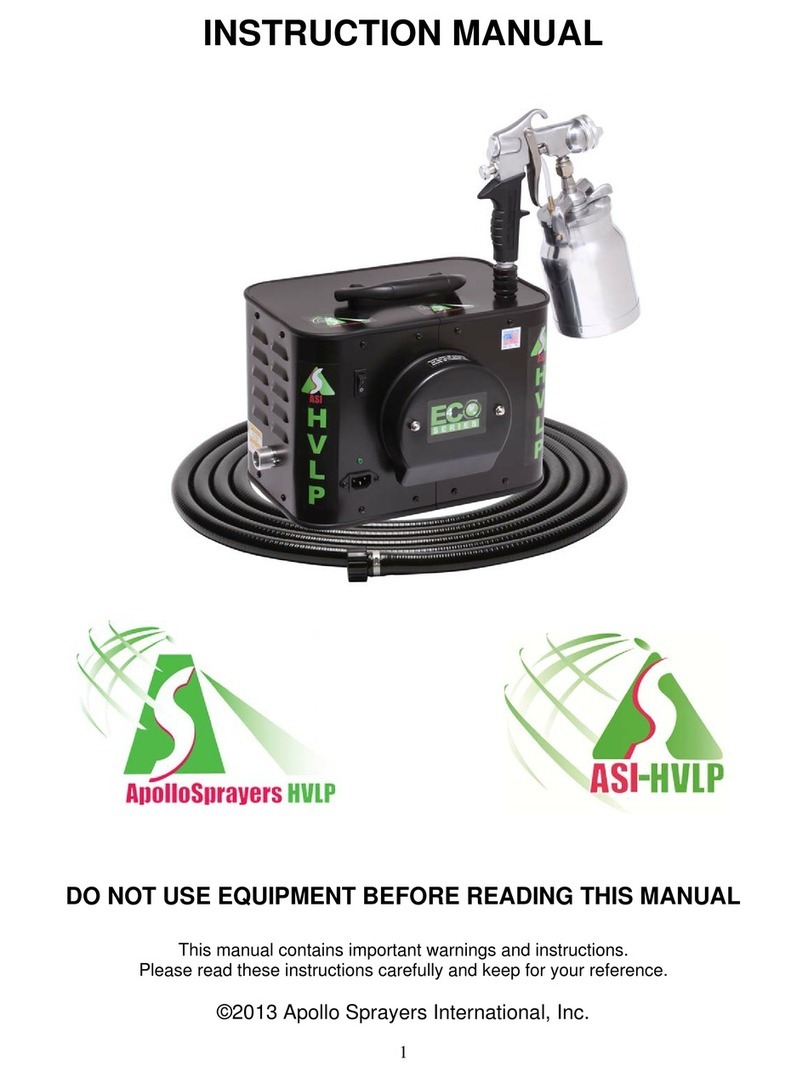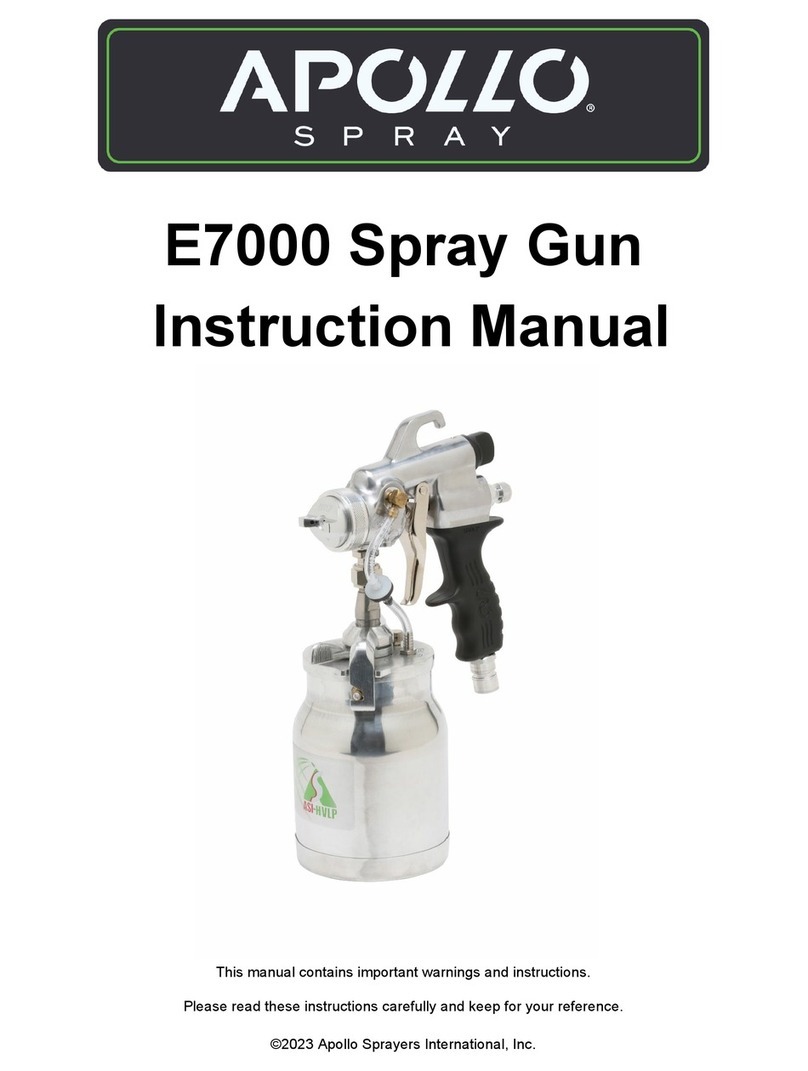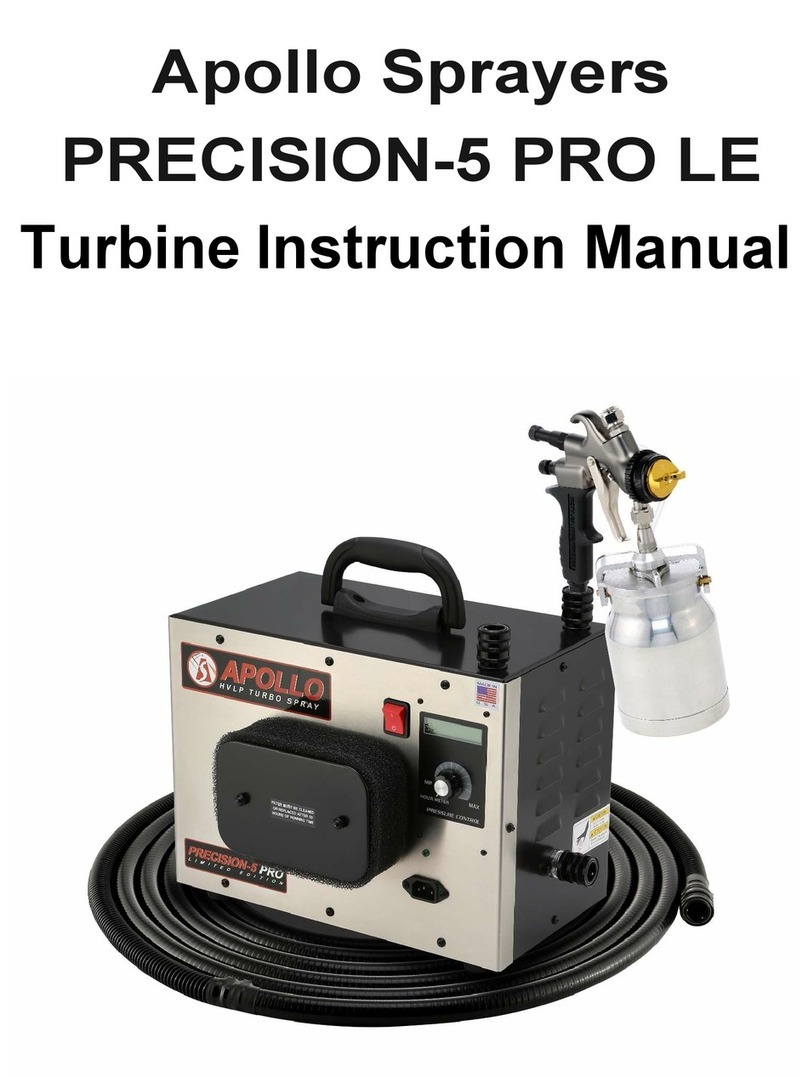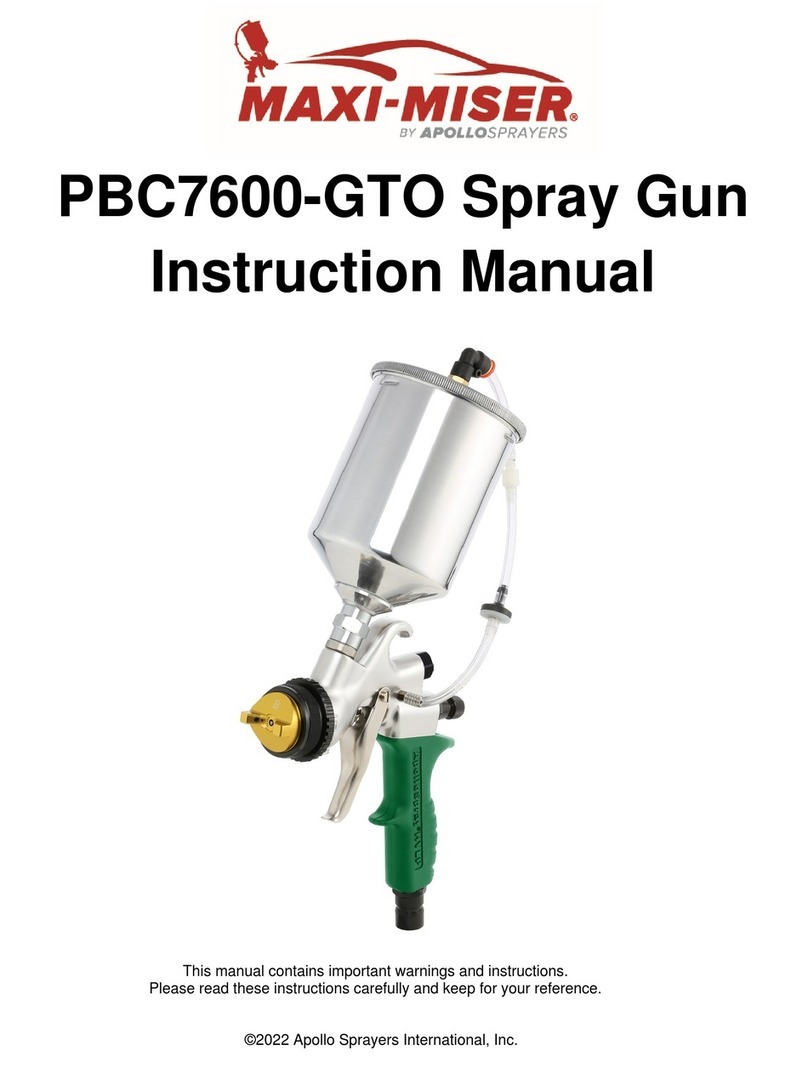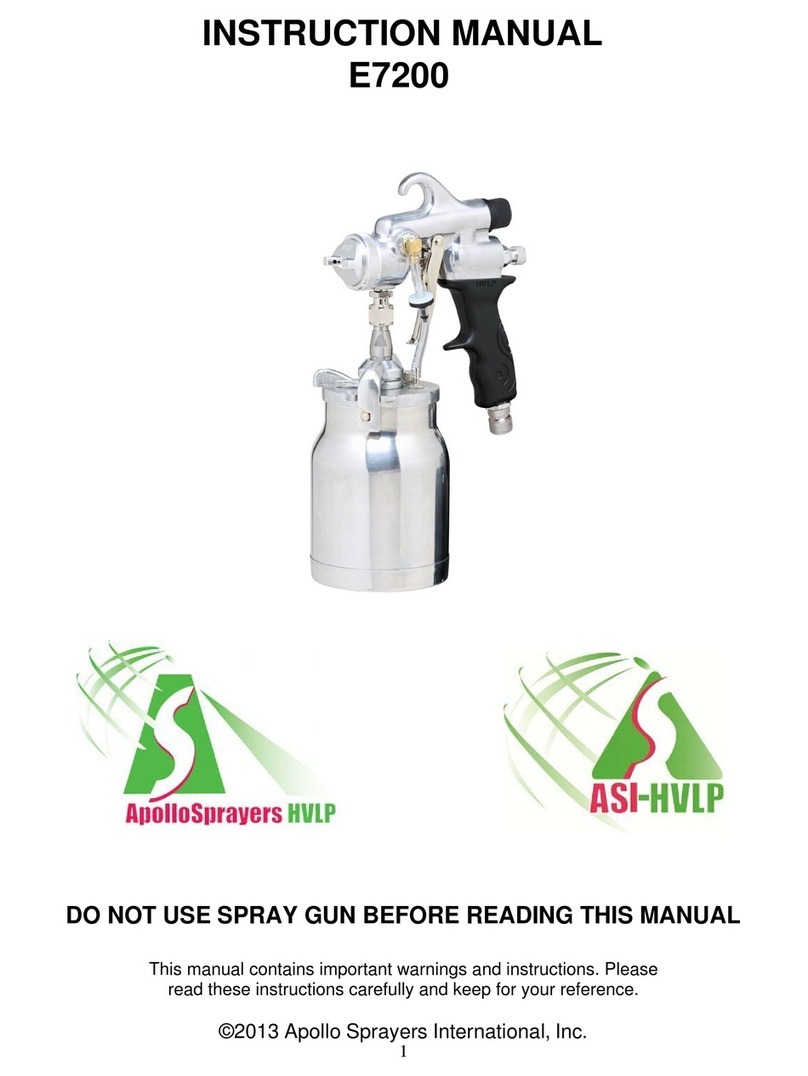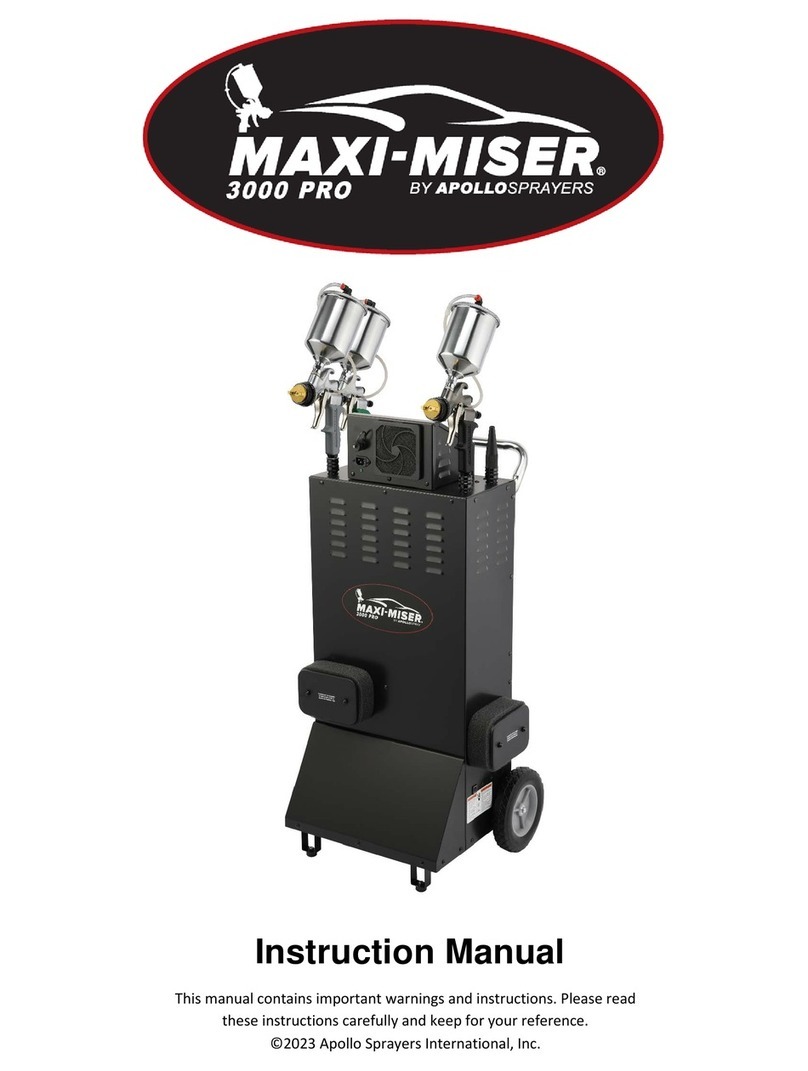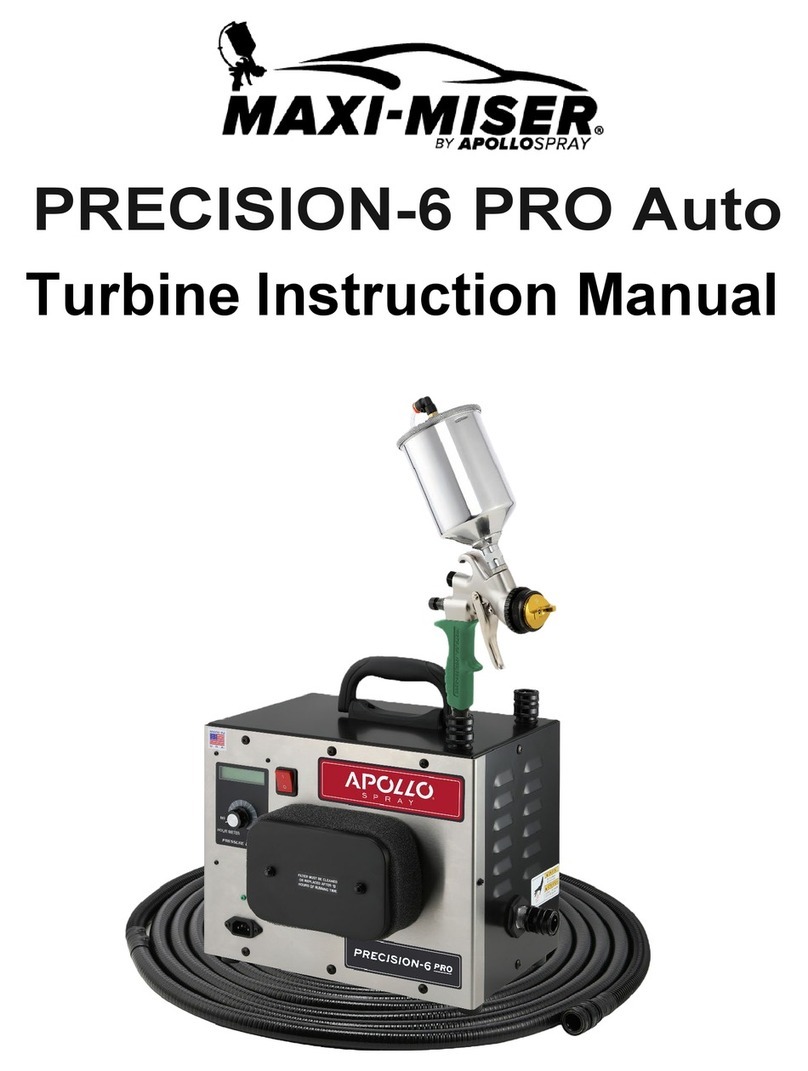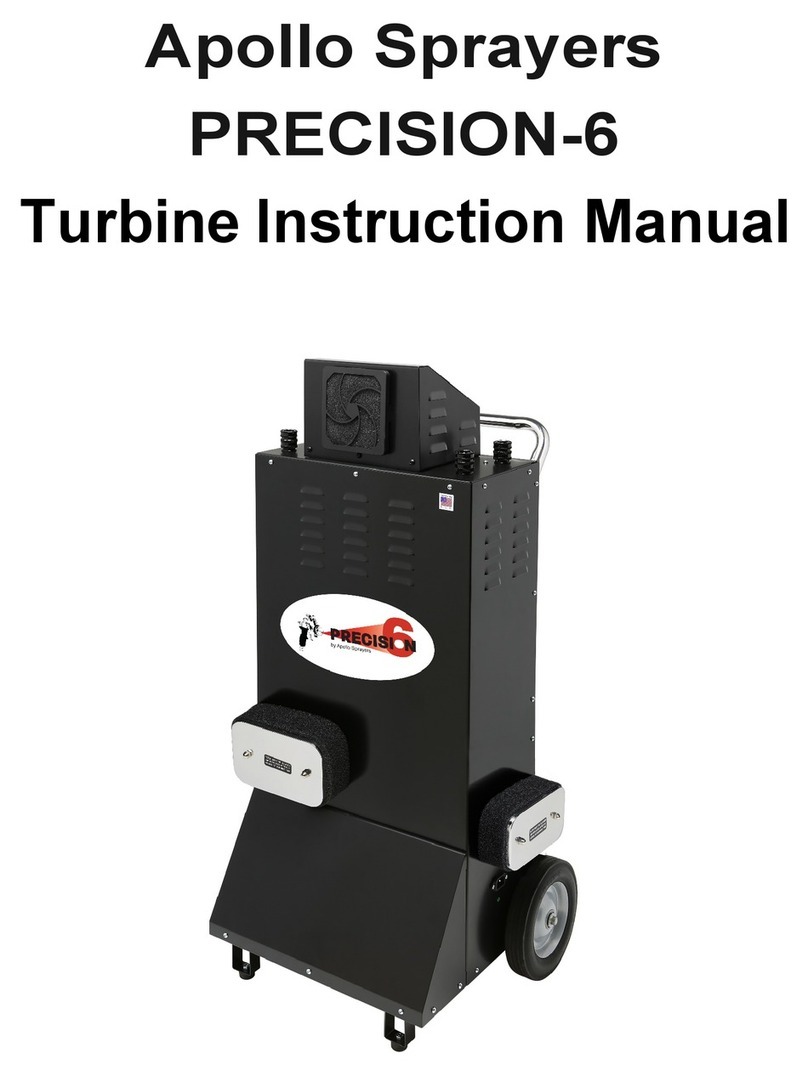
~2~
TableofContents
1Safety.............................................................................................................................................3
2Maxi-Miser™ Spray Finishing Systems..........................................................................................5
3 How Your Maxi-Miser™ Turbo System Works................................................................................5
4How Your PBC-GTO™ Spray Gun Works......................................................................................6
5Preparing To Use Your Maxi-Miser™ Turbo System......................................................................6
6Setting up Your PBC-GTO™ Spray Gun.........................................................................................7
6.1Operating your PBC-GTO Spray Gun......................................................................................8
6.2 Spray Gun Technique............................................................................................................10
6.3 Cleaning Your PBC-GTO Spray Gun ....................................................................................11
6.3.1 Partial Cleaning................................................................................................................11
6.3.2 Thorough Cleaning ..........................................................................................................12
6.3.3 Re-Assemble The Spray Gun..........................................................................................13
7Get To Know Your Maxi-Miser™ Turbo System...........................................................................18
8 Maxi-Miser™ 2000 Operation......................................................................................................18
9 Turbo Air Pressure and Viscosity ................................................................................................19
10 Using Pressure Pots with Turbo Systems....................................................................................20
10.1 Testing Air Pressure in a Pressure Pot...................................................................................21
10.1.1 Cleaning Your Pressure Pot ...........................................................................................21
11 Record of Turbo Use....................................................................................................................22
12Record of Turbo Maintenance......................................................................................................22
13 Turbo Maintenance and Cleaning................................................................................................23
13.1 Pre-Filter Maintenance ..........................................................................................................27
13.2 Filter Maintenance.................................................................................................................24
14 Model 4500 Diagram ...................................................................................................................25
15 Model 4500 Parts List..................................................................................................................26
16 Model 4550 Diagram ...................................................................................................................27
17 Model 4550 Parts List..................................................................................................................28
18 Geniune Apollo Accessories........................................................................................................29
19 Warranty......................................................................................................................................31
